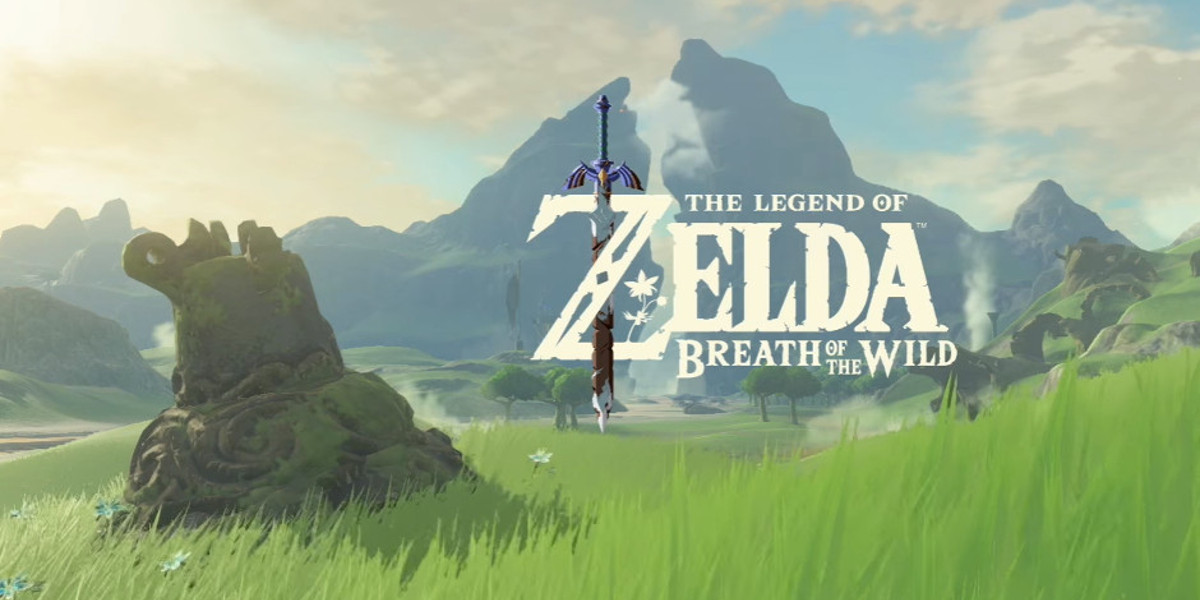The Legend of Zelda is one of the longest-running game series around, and has always been a popular game. The Legend of Zelda: Breath of the Wild was released a few months ago, but we’re only now getting around to reviewing it. In our defence, it’s a pretty big game, all right? Let’s get our Master Sword on and explore Hyrule.
The Legend of Zelda: Breath of the Wild starts 100 years after the action has already happened. Link wakes up in a mysterious cave, and immediately starts hearing voices telling him to get up and do stuff. After finding his way out and picking up a handy dandy tablet-like device called a Sheikah Slate, he heads out into the wide world to — what else? — kill Ganondorf (who, for some odd reason, is now called Calamity Ganon, like some gun-wielding yeehah from the Wild West). Along the way, he’ll gather the usual assortment of toys and weapons, but there’s a twist on all this. Link has lost his memory, and can’t recall who he is, who anyone is, and why he’s wandering the world.
The first thing you’ll notice about Breath of the Wild is just how big and beautiful it is. The art style is stunning and in a way, fairly timeless. I have a feeling that this game is going to look as good in ten years as it does now. Grass sways peacefully in the breeze, animals dart here and there, clouds race across the sky, and when night falls, glow worms dance about under the twinkling stars. It’s stunning. The music has been toned down, too, and instead of the usual symphonic grand pieces we’re used to, many of the tunes are piano solo versions of the songs we know and love. Even the “success” tune is a cute piano riff.
Gameplay is far less of the linear set of dungeon trawls with puzzles attached, and more a sandbox exploration experience. I’ve been told that the game can be completed in a few hours, but then you’d be missing out on much of the game’s charm and beauty. The entire game is driven by the desire to explore, and this puts it firmly at the top of my favourite games of all time. They weren’t joking when they said that if you can see it, you can climb and reach it. The game world is simply massive, filled with mountains and crags and grassy knolls puzzle temples and enemies aplenty.
Let me talk about the battle system for a bit, though, because this I felt is where Breath of the Wild fell down the most. Each weapon and shield you can pick up has its own endurance, and you can’t whack anything for too long before the weapon breaks. This means that you should ideally have five or six backup weapons and shields on your person at any time. Some people liked this aspect of the game, others didn’t. It might end up being a pet hatred of the game’s physics, or like me, not really bother you at all.
Speaking of physics, I was highly impressed with what factors the game engine took into account. Metals were conductive. Temperature and sound mattered. Things burned and got electrocuted and froze and you could play around with these things to insane degrees. So much so that I’ve seldom seen a game that lets you solve puzzles in so many different ways purely because the physics works. One brilliant example I saw was a guy who couldn’t figure out the “proper” solution to a puzzle that required moving conductive blocks around to channel electricity, so he made his own conduits with swords and it worked. A game that rewards creativity is a rare beast indeed.
Another difference Breath of the Wild has from other Legend of Zelda games is the cooking mechanic, which has you gathering ingredients from around the world and cooking them together over fires to see what you get. Some dishes will be pure terror on a plate, but it’s always interesting to see what comes out of what ingredients. My biggest annoyance with this aspect of the game is that, while you could check a dish or potion’s recipe as long as you have it in inventory, if you no longer possess it, there’s no way to tell how you made it. There’s no recipe system in place to track your ingredients and cooking, and this was a pity, because I ended up keeping a paper journal of things I mixed together and how they turned out.
I played both the Wii U and Switch versions of the game, and I found very little difference between the two, which was impressive. Graphically, the game is almost identical on both systems. Although I preferred the Wii U’s gamepad as a control mechanism, the Switch’s portability gives it an edge here. The game supports specific amiibo for certain rewards during play if you’re collecting those. I don’t have any Link amiibo, so I couldn’t test this functionality.
I absolutely loved loved loved The Legend of Zelda: Breath of the Wild. There’s a good reason why the game is actually outselling the Switch, which is crazy, I know. If you ever needed a game that was big, beautiful, and rewarding to play, then this is the game you were looking for.







